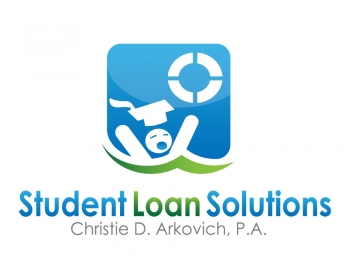 Matt Taibbi of the Rolling Stones just published a very enlightening piece “The Great College Loan Swindle” today. He explains just how universities, banks, and the government turned student loan debt into America’s next financial bubble — or as a client called it this week a “nightmare”.
Matt Taibbi of the Rolling Stones just published a very enlightening piece “The Great College Loan Swindle” today. He explains just how universities, banks, and the government turned student loan debt into America’s next financial bubble — or as a client called it this week a “nightmare”.
He highlights a student who very nearly committed suicide over overwhelming student loan debt incurred at age 19. The spiral of debt began with colleges telling everyone who could, to go to school and get a college degree to remain competitive in today’s marketplace. That a high school diploma is no longer enough. But if everyone goes to college, this simply means that a bachelor’s degree is the equivalent of a high school degree 10 years ago. Kind of like 50 is the new 40.
Parents not wanting to stand in the way of their child’s future, either paid out the nose or went into debt themselves by signing Parent Plus loans. Kids were pressured to sign loan applications electronically semester after semester. The students we spoke with did not receive paper copies of the applications they signed. No one really knew what the total balance would turn out to be.
Both private and federal loans were and still are easily accessible as they are quite profitable with interest rates far higher than mortgage rates in most cases, and considered bankruptcy proof. Federal loans under the Federal Family Education Loan (FFEL) program came with a federal guarantee and were very profitable for lenders. Prior to 2010, 80% of the federal loans were originated by private lenders. President Obama was successful in discontinuing the FFEL program understanding that the Direct loans offered by the federal government were a cheaper alternative.
Private loans were often securitized, much like Countrywide mortgages were during the housing boom, and risk was offloaded onto others. Many private loans set up a relationship with a non-profit guarantor which provided additional bankruptcy protection.
Mr. Taibbi points to October 2017 as being the “first glimmer of light at the end of the tunnel” that student loans would eventually be paid off. This month was supposed to be the first month that student borrowers could qualify for Public Service Loan Forgiveness (“PSLF”) after making their 120 payments following the program’s inception in October 2007. But instead, it turns out the rug was pulled out from under these public service employees.
For those who follow our blog, you may remember that several of our clients in Florida have filed class action lawsuits in the last two weeks claiming their servicers, Great Lakes and Navient, incorrectly informed them they were accruing time toward PSLF when all along they could not have been — they have older FFEL loans that are ineligible for PSLF. This is a problem that could have been rectified years ago, by consolidation into a Direct Consolidation Loan that would have been eligible. But instead of properly advising the consumers of this requirement, the servicers told these clients that all they needed to do was to continue to make their payments on time and apply in 10 years for PSLF discharge. Nothing could have been further from the truth. Rather than forgiveness, these students were essentially forgotten.
For further information about the PSLF program, the progress of our clients’ class actions, information on how to join these class actions (which will be seeking a nationwide class) and how to avoid pitfalls in the PSLF or other forgiveness program, please take a minute a reach out to us at christiearkovich.com. We are student loan attorneys, yes really, there is such a thing. There are far too few of us I’m afraid. Do you need a student loan lawyer? See our Student Loan Survival Center for more information about possible options to reduce student loan debt.
 Reboot Your Life: Tampa Student Loan and Bankruptcy Attorney Blog
Reboot Your Life: Tampa Student Loan and Bankruptcy Attorney Blog

